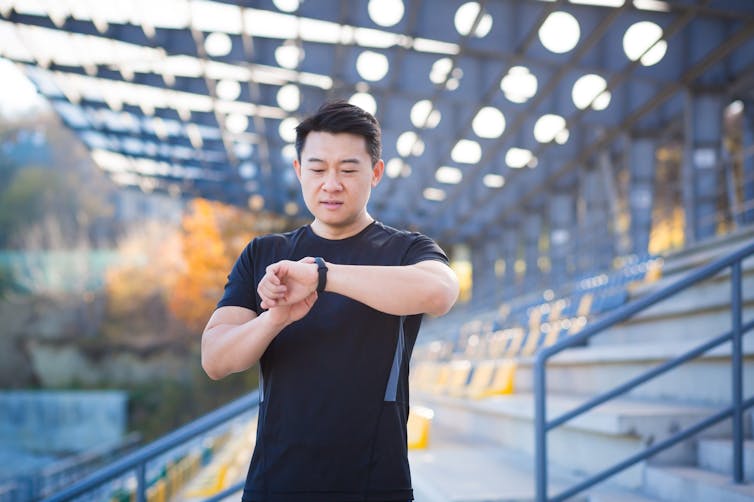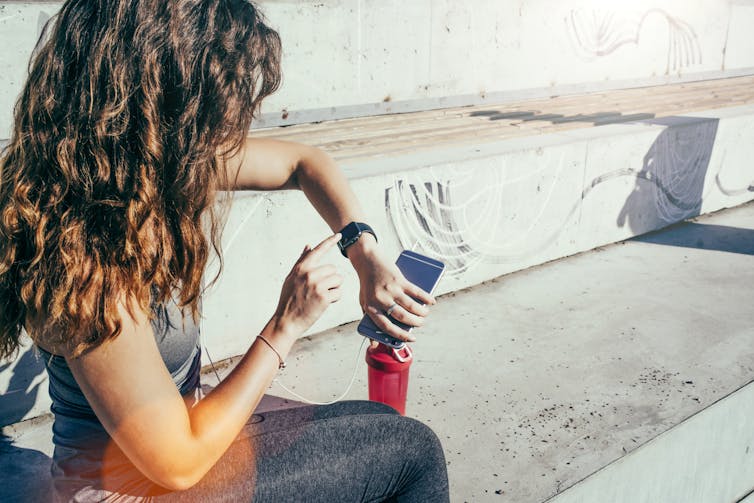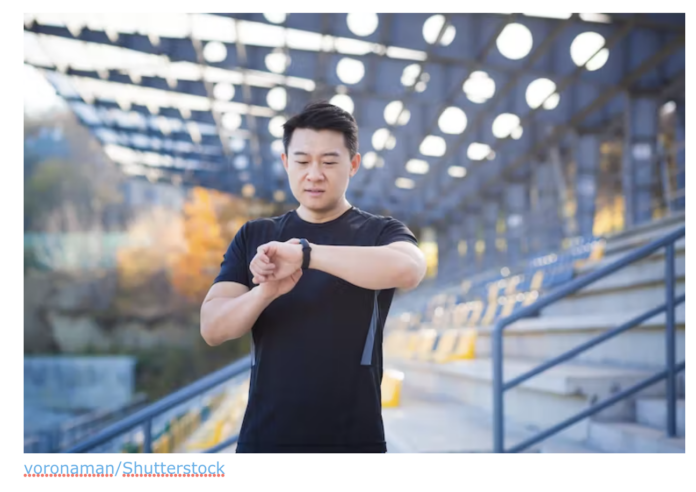Smartwatches could help detect and track COVID – here’s what the research shows

By Javier Andreu-Perez, University of Essex
Wearable technologies such as smartwatches and activity trackers have attracted lots of interest over the past few years around their potential to monitor our health.
You can listen to more articles from The Conversation, narrated by Noa, here.
During the pandemic, attention has turned to whether these wearable devices could detect physiological changes that might indicate a COVID infection. This in turn could help with early isolation and testing, reducing the spread of the virus.
So what does the evidence say? Could these technologies be an effective tool to help navigate the pandemic? Let’s take a look.

This article is part of Quarter Life, a series about issues affecting those of us in our twenties and thirties. From the challenges of beginning a career and taking care of our mental health, to the excitement of starting a family, adopting a pet or just making friends as an adult. The articles in this series explore the questions and bring answers as we navigate this turbulent period of life.
You may be interested in:
I have COVID symptoms. Should I do a test?
Online dating fatigue – why some people are turning to face-to-face apps first
Four ways you can design social media posts to combat health misinformation
An elevated respiratory rate, or breathing rate, has been shown to be a useful biomarker for the early detection of COVID. Respiratory rates can be estimated using a method called photoplethysmography which requires only a single point of contact (for example, your finger or wrist).
Photoplethysmography is often susceptible to external factors such as ambient light, pressure or motion. So most studies seeking to use this method to detect COVID have focused on monitoring people during sleep.
Electronics company Fitbit analysed the nocturnal respiratory rates of thousands of users of their devices to understand whether this measure could aid COVID detection. They found that within a seven-day period (from one day before symptom onset, or one day before a positive test for participants without symptoms), a portion of people with COVID showed at least one measurement of elevated respiratory rate.
Although this was detected in only roughly one-third of symptomatic COVID sufferers, and one-quarter of asymptomatic patients, this study suggests that commercial wearables could potentially be a non-invasive way to detect possible COVID infections and get them tested.
Another study looked at the potential of a fitness tracker by US brand WHOOP to predict COVID risk. Data on respiratory rate and other indicators of heart function from a group of people with COVID was used to train an algorithm to predict infection.
The model was then tested on a separate group of people, some with COVID, and others without COVID, but with similar symptoms. Based on respiratory rate during sleep, the technology was able to identify 20% of COVID-positive cases in the two days before symptom onset, and 80% of cases by the third day of symptoms.

A recent study found that a fertility tracker called Ava, also worn around the wrist, could identify physiological changes up to two days before COVID symptoms appeared. The device measures signals including breathing rate, heart rate, skin temperature and blood flow, as well as sleep quantity and quality.
Data from COVID-positive patients was similarly used to inform a machine-learning algorithm. Testing revealed it was able to pick up 68% of positive cases up to two days before symptoms became obvious.
Other forms of digital detection
In addition to wearables, digital technologies might also be used in other ways to detect COVID. High-quality microphones are already embedded in smartphones and other gadgets, paving the way for audio analytics.
COVID usually affects the upper respiratory tract and vocal cords, leading to changes in a person’s voice. A mobile phone app trained on hundreds of audio samples from people with and without COVID has been shown to accurately detect whether a person has the virus 89% of the time.
My colleagues and I have developed an app that aims to detect whether you might have COVID by the sound of your cough. The technology is currently under study.
Tracking illness
Research has also explored the potential for smart technologies and wearable devices to monitor people during a COVID infection. For example, one team used an in-ear device to measure oxygen saturation, respiratory rate, heart rate and temperature every 15 minutes in high-risk patients managing COVID at home. The data was monitored by a trained team and used to help identify which patients might need extra medical care.
Early in the pandemic, smartphones were proposed as a potential solution to detect hypoxia via the user’s fingertip. Hypoxia refers to low oxygen levels in the body tissues and occurs silently in some COVID patients with more serious disease.
Wearable technologies have also been used to map the impacts of COVID on a broader scale. For instance, data from many thousands of Fitbits highlighted changes in sleep during the pandemic (early in the pandemic people were generally sleeping for longer, for example).
An extra line of defence
Most of the wearable and other technologies being trialled for their potential to detect COVID rely on artificial intelligence (AI) methods, particularly machine learning and deep learning. AI can effectively scan a large amount of data in great detail to identify relevant patterns in body signals to recognise the health condition of interest.
However, patterns of biological signals can be highly variable within and between patients, so there may be limits to these AI models in the real world. It’s also worth noting that off-the-shelf wearable devices haven’t specifically been designed to monitor infectious disease symptoms continuously. So there may be improvements needed to the technology and to the algorithms.
We will need ongoing research to address these challenges, alongside close scrutiny of any possible privacy concerns associated with collecting biological data for this purpose. But wearables and other digital technologies could provide an added line of defence to help us keep COVID and other infectious diseases at bay.![]()
Javier Andreu-Perez, Senior Lecturer, School of Computer Sciences and Electronic Engineering, University of Essex
This article is republished from The Conversation under a Creative Commons license. Read the original article.



